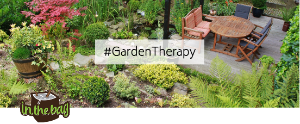Three basic requirements for success:
- Full sun – Most warm-season vegetables need at least six to eight hours of direct sun. The soil temperature depends on the sun to keep the vegetables going and resistant of insects and disease. Plant your raised bed vegetable garden in a place you know is exposed to light most of the day.
- Plenty of water – Because most vegetables aren’t drought-tolerant, you’ll need to give them a drink during dry spells. When thinking about raised garden bed plans, remember the closer your garden is to a source of water, the easier it will be for you. This is especially important when planting tomatoes, peppers or any other warm-season vegetable.
- Good soil – As with any kind of garden, success usually starts with the soil. Most vegetables do best in moist, well-drained soil that is rich in organic matter, such as compost or peat moss. The soil temperature is also vital to keep your vegetables alive and well. Utilize a soil thermometer to help track the soil temperature.
Testing & Fixing Your Soil:
Without ideal soil conditions, your vegetables will suffer. Before you start planting, it is best to test your soil. No soil-testing kit on hand? You can manually test your soil in three easy steps:
- Soak soil and dig – Soak the soil with a hose, wait a day, then dig up a handful of soil to test.
- Squeeze the soil hard – If water streams out, you’ll probably want to add compost or organic matter to improve the drainage. Testing the soil temperature will also help in determining drainage.
- Open your hand– If the soil hasn’t formed a ball or falls apart at the slightest touch, the soil is too sandy. Add organic matter to improve sandy soil. If the ball breaks into crumbs when you poke it, like a chocolate cake, your soil is in ideal condition. If your soil doesn’t drain well, your best bet will probably be to install raised beds as opposed to sunken beds
After making sure your soil is in ideal condition, it’s time to start digging. Utilize these steps before digging your new garden or building a new sunken bed from scratch.
- Loosen your soil – Loosen your soil before growing vegetables in raised beds or sunken beds. You can either use a tiller or dig the bed by hand.
- Spread out soil – Once the soil has been loosened, spread out soil amendments, such as compost, and work them into the soil. Avoid stepping on freshly tilled soil as much as possible. Otherwise, you’ll be compacting the soil and undoing all your hard work.
- Smooth surface – When you’re done digging, smooth the surface with a rake, then water thoroughly. Allow the bed to rest for several days before you plant.
- Test soil temperature – Test the soil temperature with a soil thermometer. This is to assure the bed is in a proper place for your vegetables.
Most warm-season vegetables appreciate a steady supply of moisture; about an inch of water per week is usually sufficient. Water vegetables when the top inch of soil is dry. For in-ground crops, that may mean watering once or twice a week; raised beds drain faster than sunken beds and may require watering every other day. By planting vining crops, like green beans and peas, you make use of vertical space in the garden.
Weeds compete with your vegetables for water and nutrients, so it’s important to keep them to a minimum. Use a hoe or hand fork to lightly stir, or cultivate, the top inch of soil regularly to discourage weed seedlings. A mulch of clean straw, compost, or plastic can keep weeds at bay around larger plants like tomatoes.
Fertilizing your vegetables is critical to maximizing yields. Organic gardeners often find that digging in high quality compost at planting time is all their vegetables need. Most gardeners, however, should consider applying a packaged warm season vegetable fertilizer, following the directions on the box or bag. Don’t apply more than recommended as this can actually decrease yield.
Harvesting your vegetables is what gardening is all about, so don’t be shy about picking your produce. Many vegetables can be harvested at several stages. Leaf lettuce, for example, can be picked as young as you like; it will continue to grow and produce after you snip some leaves. Summer Squash (zucchini) and cucumber can be harvested when the fruit is just a few inches long, or it can be allowed to grow to full-size.
The general rule: If it looks good enough to eat, it probably is. With many vegetables, the more you pick, the more the plant will produce.
In The Bag Landscape Products carries a soil called Gro-Max® Premium Garden Soil. Gro-Max® is a dark, rich, soil formulated for optimum root growth and plant health. It is a well balanced, complete soil with high organic matter and is light weight and porous for optimum water holding.
Stop into In The Bag Landscape Products to purchase Gro-Max® for your vegetable garden.


